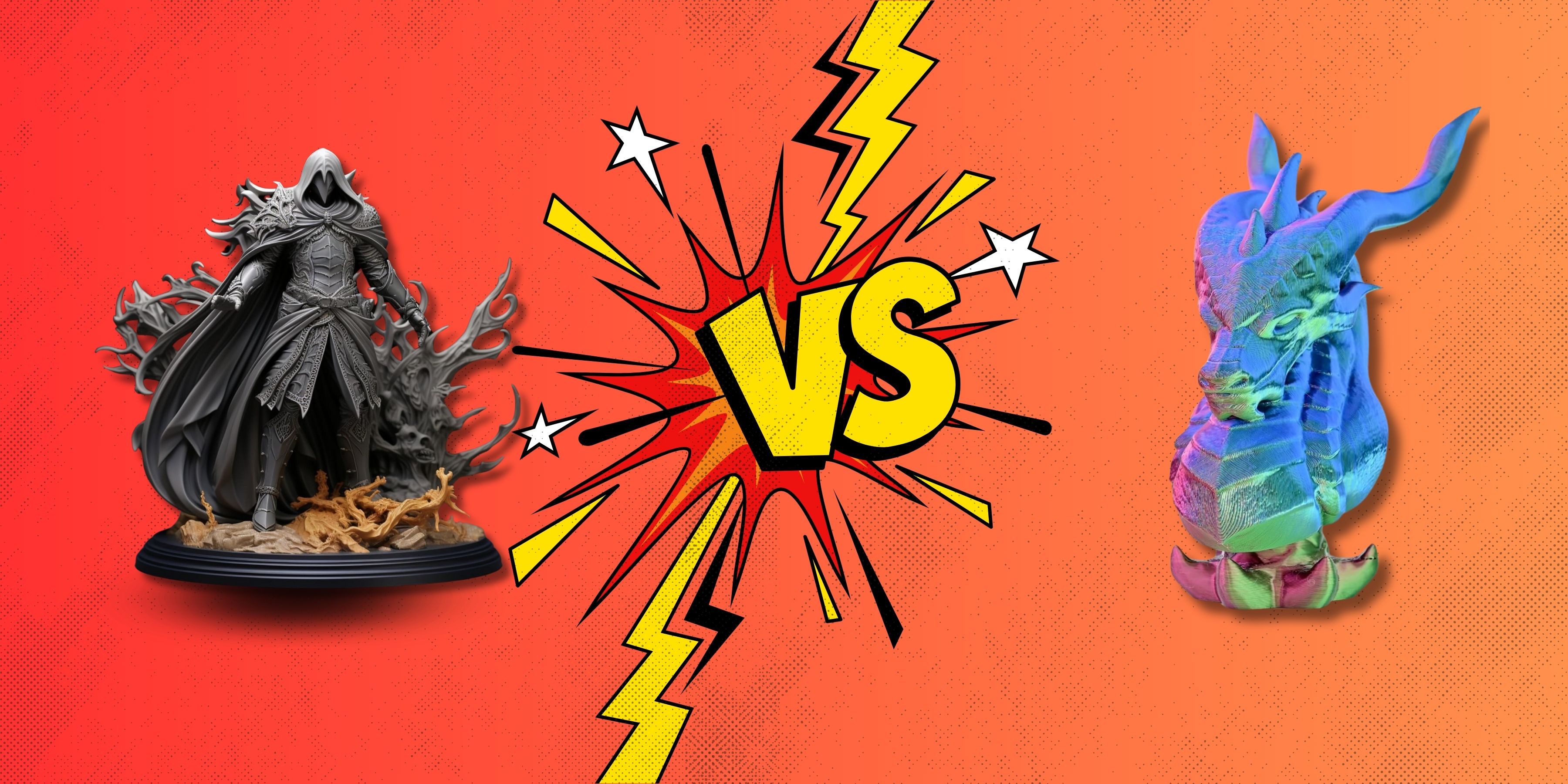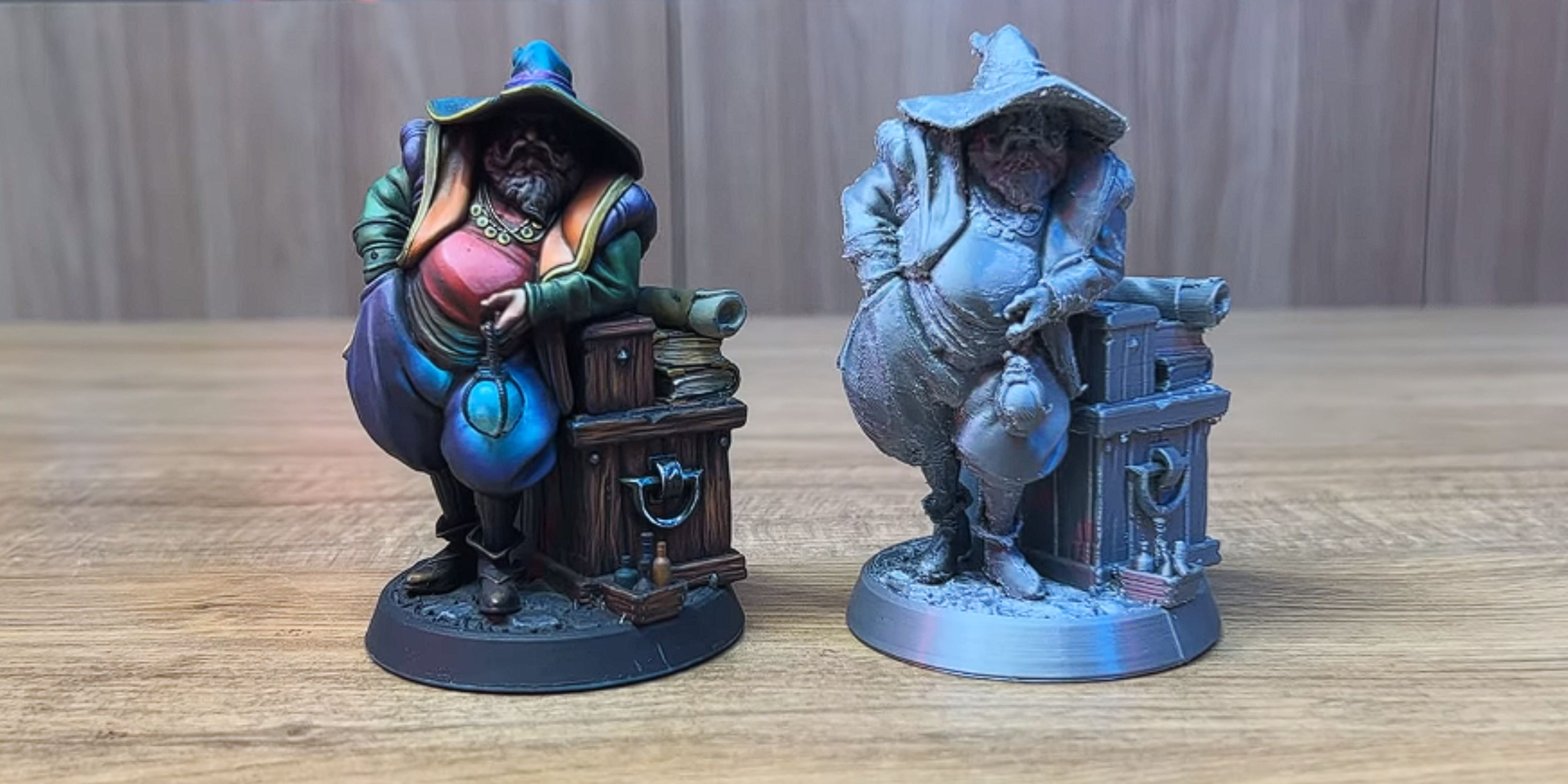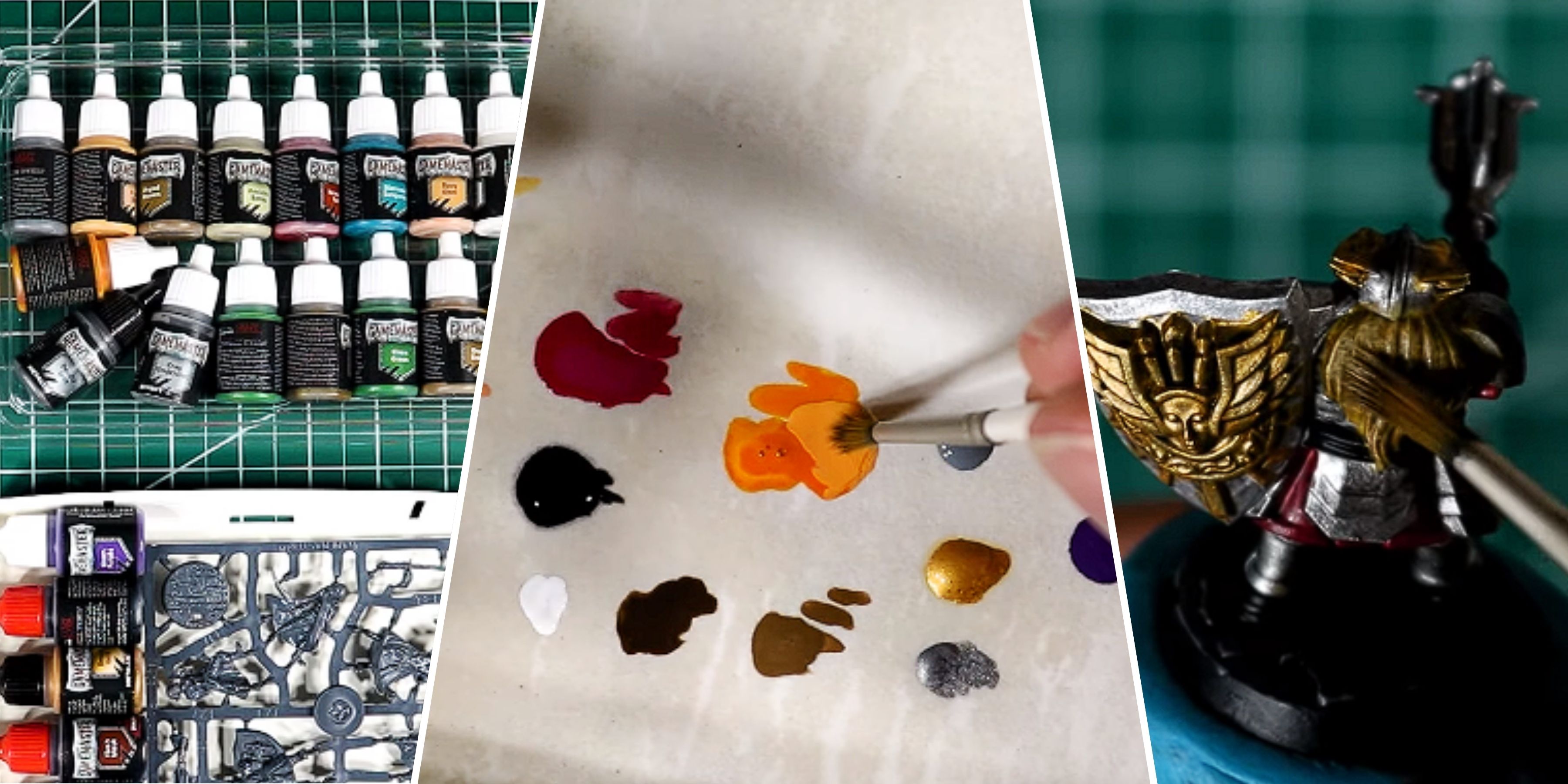Remember those clunky, industrial machines that used to take up entire rooms?
Well, luckily,3D printers are no longer so bulkythese days, making them more accessible to hobbyists.
Now, you’re able to bring your imagination to life from the comforts of your home.

Both materials have their pros and cons.
Today, we’re jumping into those features to help you find which fitsyour tabletop needsbest.
What Is 3D Resin Printing?

via Loot Studios
Resin printing offers incredible detail and a smooth surface finish, making it ideal for high-quality figurines.
What Is 3D Filament Printing?
It uses a solid plastic filament (think thin wire) to build your figurine layer by layer.

via Loot Studios
Resin Vs. Filament: Which Is Better For You?
Picking the right material boils down to what you want your finished figurines to look and feel like.
Let’s delve into some key factors that will influence your decision.

via Loot Studios
Printing Quality and Detail
As mentioned earlier, resin reigns supreme for capturing intricate details.
While filament printing has come a long way, it can’t quite match the smoothness of resin.
The melted plastic extrusion process leaves behind visible layer lines, which can be more prominent on smaller figurines.

Printing Size
This is where the tables turn.
Filament printers typically boast a larger build volume compared to resin printers.
This means it’s possible for you to print much bigger figurines in one go with filament.

Imagine printing a towering orc warlord or a colossal griffin - filament lets you tackle these larger-than-life projects.
Resin printers, however, are better suited for smaller to medium-sized figures.
Printing Time
Printing speed can vary depending on the complexity of your figurine and your printer controls.
However, as a general rule, filament printing tends to be faster than resin printing.
This is because resin printers require curing each layer with light, which adds extra time to the process.
Printing Cost
Generally, printing with resin is more expensive per figurine than with filament.
Here’s the breakdown:
Filament printing is generally more budget-friendly.
Filament is typically less expensive than resin, and the printing process itself requires fewer additional materials.
However, if detail and finish are paramount, resin is the clear winner.
Remember, the best choice depends on your specific figurine project.
Consider the size, level of detail you desire, and your budget to make an informed decision.
FAQ
What are the disadvantages of resin 3D printers?
The shelf life of 3D printer resin can vary depending on the brand and storage conditions.
Most unopened resin has a shelf life of around1-2 years if stored properly in a cool, dark place.
What paintbrush should I use for resin figures?
Here’s your comprehensive guide to painting miniatures!